13 Antique Woodworking Tools Collectors Are Hunting For
For generations, woodworking tools helped shape everything from delicate cabinets to sturdy homes. Each tool served a specific role, guiding the woodworker through every cut and joint. Though many have been replaced by newer technology, their design and function still draw interest. Collectors and enthusiasts appreciate them as pieces of history that once defined everyday craftsmanship. Take a moment to explore the tools that built so much of the world we know.
This post may contain affiliate links, which helps keep this content free. Please read our disclosure for more info.
Stanley No. 1 Smooth Plane
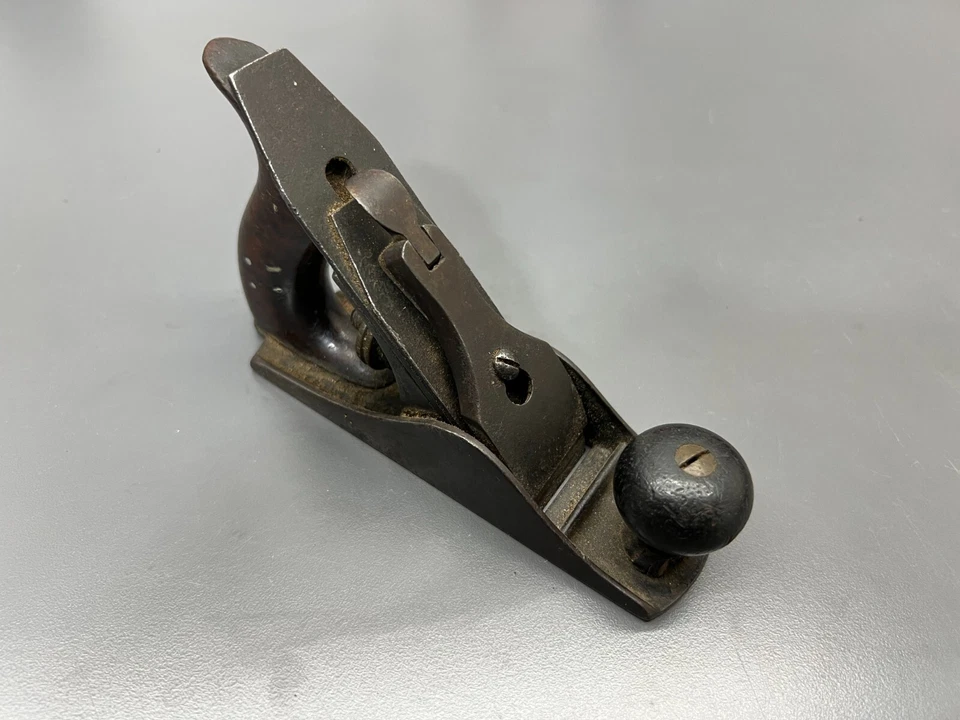
Released in the late 1860s, the Stanley No. 1 Smooth Plane was made from cast iron and fitted with a rosewood handle. It was designed for fine finishing work, allowing craftsmen to create smooth wooden surfaces. Its small size made it popular among detailed furniture makers and carpenters. Today, its scarcity and historical value have made it one of the most sought-after tools by collectors. A well-kept Stanley No. 1 can sell for around $1,200 to $2,000 depending on condition.
Each detail of this tool reflects early American industrial craftsmanship. The blade adjustment knob and polished lever cap were both engineered with care. Due to its delicate size, many were lost or damaged over time, adding to its rarity. Collectors prize original examples with matching parts and clean finishes. Finding one with its original box can significantly increase its value.
Millers Falls No. 2 Hand Drill
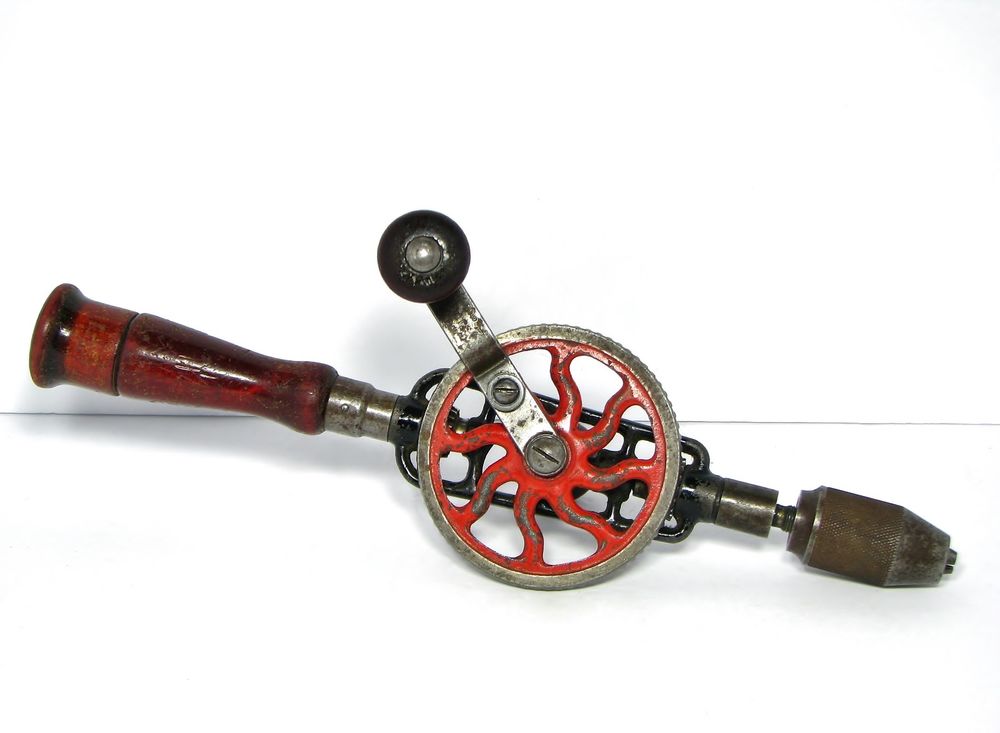
Introduced in the late 1870s, the Millers Falls No. 2 Hand Drill was made primarily from steel and hardwood. It featured a dual gear system that provided smooth and steady drilling power. Craftsmen used it for small holes in cabinetry and fine woodworking projects. Its precise performance and elegant design make it desirable among collectors today. The current value ranges from $150 to $350 based on condition and original parts.
The No. 2 stands out for its red-painted gear wheel and brass fittings. Early versions with the company’s original logo are especially collectible. Many restorers seek out these drills for both their beauty and functionality. Unlike later models, these were hand-finished and balanced for long use. Owning one connects collectors with a period of true craftsmanship and utility.
Disston No. 12 Hand Saw
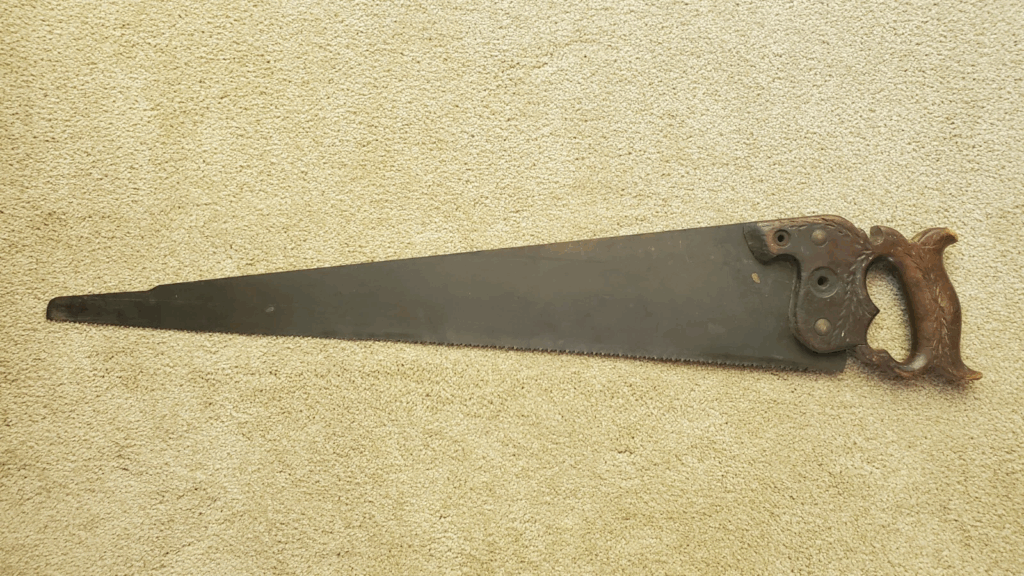
Henry Disston’s No. 12 Hand Saw first appeared around 1870 and was made of high-carbon steel with an applewood handle. It was known for its fine teeth and balance, ideal for cutting smooth lines through hardwoods. Professionals prized it for its accuracy and long-lasting edge. Today, collectors value it for its quality and distinctive medallion design. A clean example can reach $200 to $400 in today’s market.
Each saw was hand-filed and tensioned for superior cutting performance. The elegant handle featured a hand-carved grip that fit comfortably in the palm. The No. 12 represented the golden age of American toolmaking. Collectors look for early versions stamped with the keystone Disston logo. These saws remain functional even after a century of careful storage.
Goodell-Pratt No. 5 Eggbeater Drill
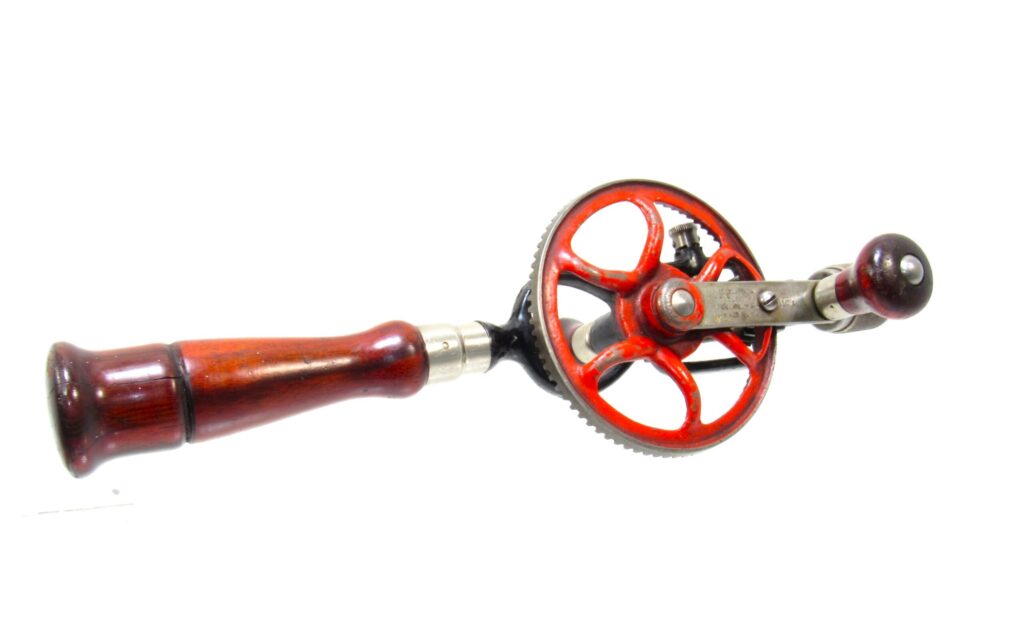
Made in Massachusetts around the 1890s, this hand drill combined nickel-plated steel with hardwood handles. It was designed for light drilling in wood, offering control before electric drills became common. Craftsmen appreciated its sturdy build and smooth operation. Its survival rate is low, making it an appealing piece for collectors. On today’s market, the drill can fetch $100 to $250 depending on finish and completeness.
The mechanical gears inside were finely machined for a seamless motion. Collectors admire the tool’s polished frame and brass accents. Its nostalgic appeal lies in the feel of manual drilling and traditional workmanship. Some still use it for delicate work in restoration projects. Owning one brings a sense of connection to woodworking’s early innovation.
Stanley No. 45 Combination Plane
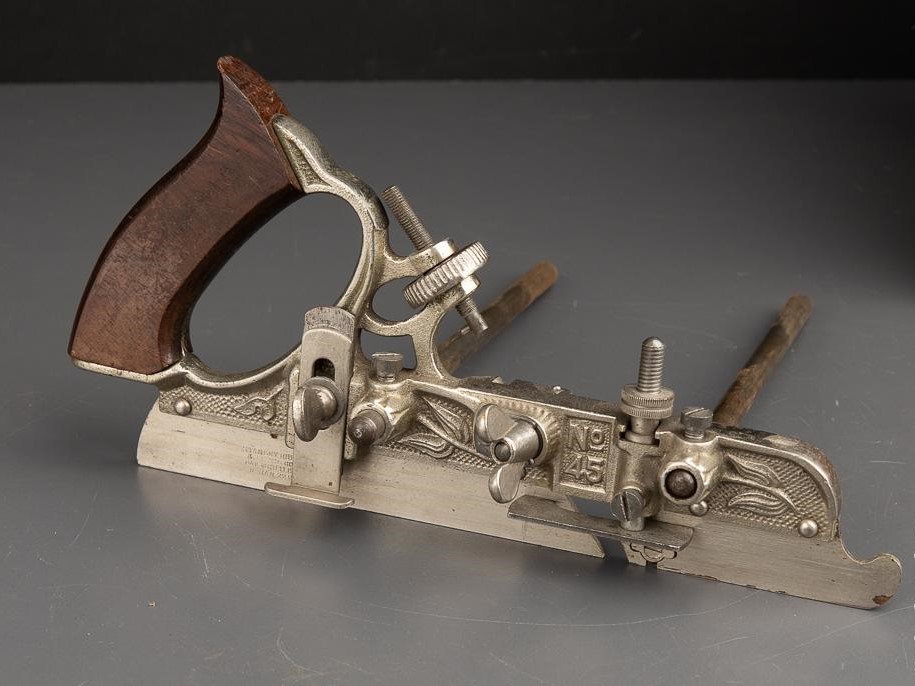
Released in the 1880s, the Stanley No. 45 was made of nickel-plated cast iron and steel. It came with multiple cutters, allowing users to make grooves, rabbets, and moldings. This versatile design made it one of the most advanced tools of its time. Due to its interchangeable parts, complete sets are now hard to find. A full example can sell for $500 to $900 today.
Each plane was stored in a wooden box with dozens of accessories. Collectors search for complete sets with all cutters and depth stops intact. The No. 45 marked a turning point in multifunctional hand tools. Its detailed engineering and long lifespan add to its charm. Finding one with original nickel plating intact significantly raises its market value.
Atkins No. 400 Back Saw
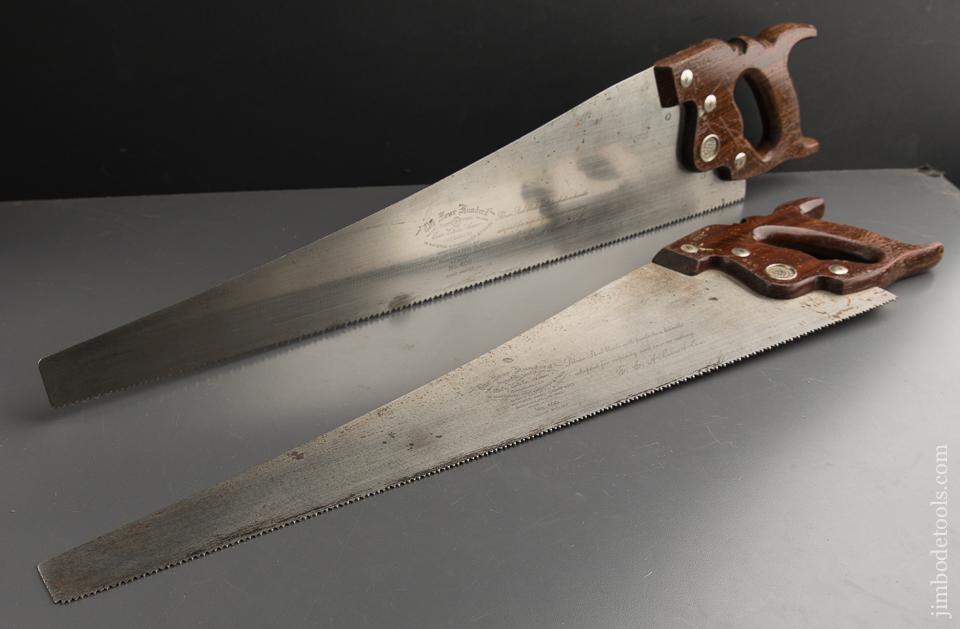
The Atkins No. 400 was introduced around 1900 and made of steel with a brass back and wooden handle. It was built for precision joinery, making tight cuts in furniture and cabinetry work. Its reputation for quality matched the more famous Disston saws of the same period. Collectors now recognize it as one of the finest saws of its generation. Well-preserved models often sell for $150 to $300.
The brass back added stability while giving the saw a polished look. Handles were shaped from applewood and finished by hand. Collectors admire its balance and resilience even after decades of storage. The saw’s etched blade logo adds to its authenticity and desirability. Today, woodworkers often display it as both a collectible and functional tool.
Stanley No. 113 Circular Plane
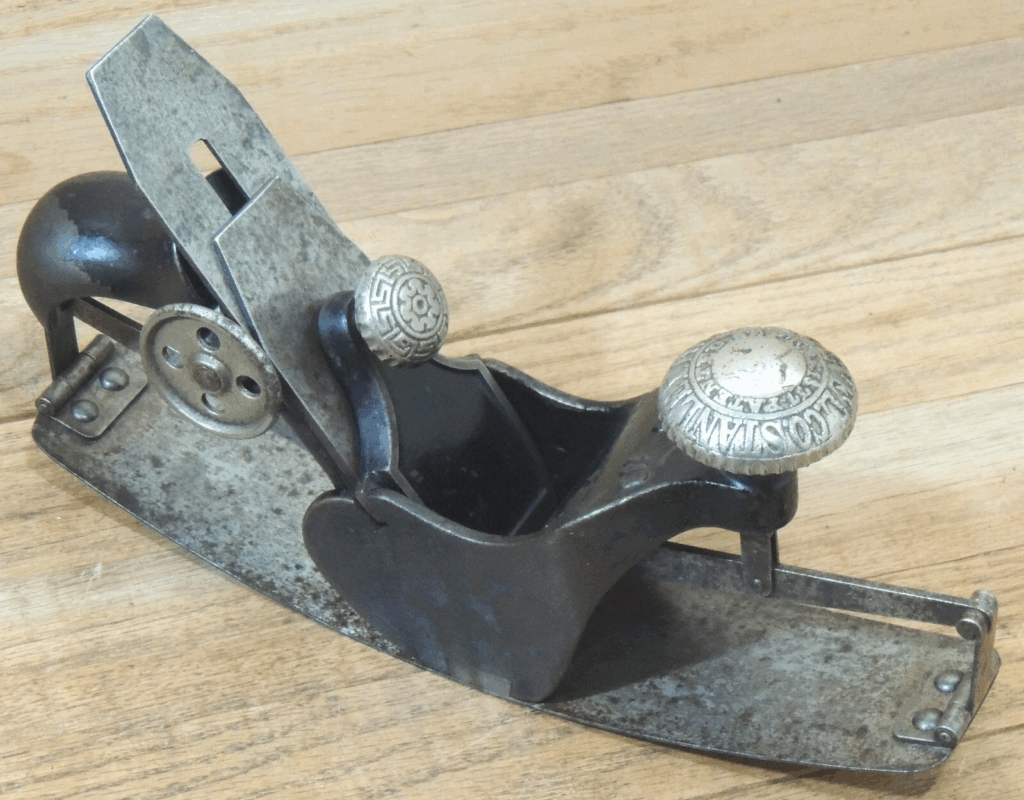
First made in the late 1870s, this plane featured a flexible steel sole that could bend to fit curved surfaces. It was designed for shaping rounded furniture edges and stair parts. The body was made of cast iron with brass fittings and an adjustable mechanism. This clever tool quickly became a favorite for specialized work. Collectors now pay $300 to $600 for good examples.
The curved sole mechanism made it one of the most distinctive planes ever produced. Early models have ornate details that later versions dropped. Collectors appreciate the mechanical ingenuity and industrial beauty it represents. Many examples were worn out in daily use, making surviving ones scarce. Its unique design continues to fascinate tool historians and enthusiasts.
Sargent No. 79 Filletster Plane
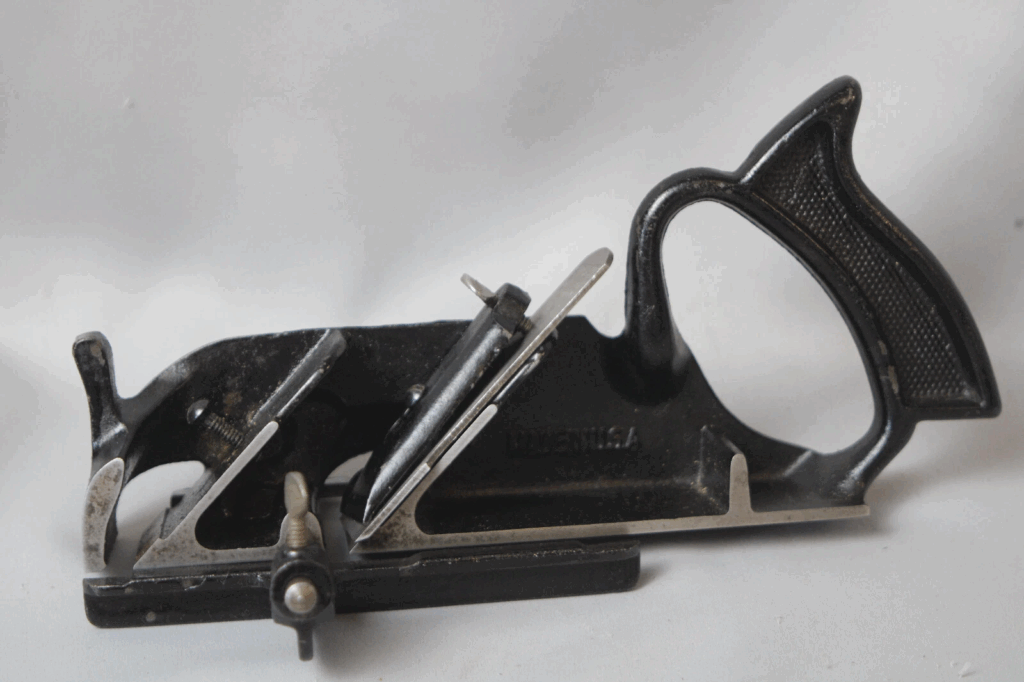
Produced around the 1910s, this plane was crafted from cast iron with a rosewood handle and knob. It was used for creating grooves and shoulders along wood edges. Woodworkers valued it for its adjustable fence and depth gauge. The Sargent No. 79 remains admired for its quality machining and smooth handling. On the collector’s market, it is worth around $250 to $450.
Its brass adjustment knobs and polished surfaces stand out among vintage tools. Many surviving examples retain original markings and hardware. Collectors appreciate the balance of design and performance. Complete versions with intact fences and blades are rare finds. It reflects a time when every tool was made to last a lifetime.
North Bros. Yankee No. 2101 Brace Drill
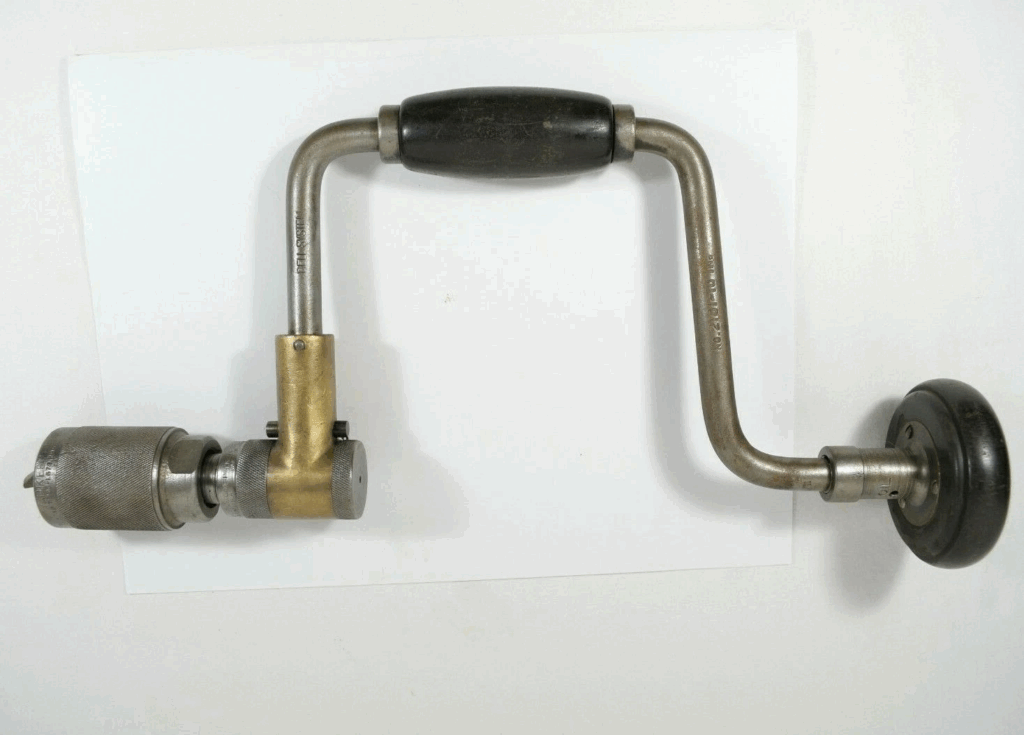
Made around the 1930s, this brace drill combined chrome-plated steel with a hardwood handle. It was used for drilling holes in wood before power drills became standard. The ball-bearing design gave it smooth rotation and reduced effort during use. Craftsmen trusted it for accuracy and durability in both field and shop work. Depending on condition, these now sell for $100 to $200.
Collectors value this model for its mechanical feel and nostalgic charm. The nickel finish often remains shiny after decades if cared for properly. Original examples with wooden grips intact are most valuable. The Yankee name itself became synonymous with quality hand tools. Many tool collectors view it as an essential piece of workshop history.
Stanley No. 55 Universal Plane

Launched in 1897, the Stanley No. 55 was a complex, multi-purpose plane made from nickel-plated steel. It could handle dozens of cutting tasks, from molding to grooving. It was known as the plane of all trades among craftsmen. Because of its detailed components, complete sets are rare today. The value ranges between $700 and $1,200 depending on accessories.
Each plane came in a wooden chest filled with cutters and parts. Collectors treasure examples with their full sets of blades and original packaging. Its engineering and versatility make it one of the most fascinating tools ever built. While complicated to use, it represents woodworking ingenuity at its peak. Intact sets are considered prized possessions in tool collections.
Stanley No. 750 Bevel Edge Chisel Set
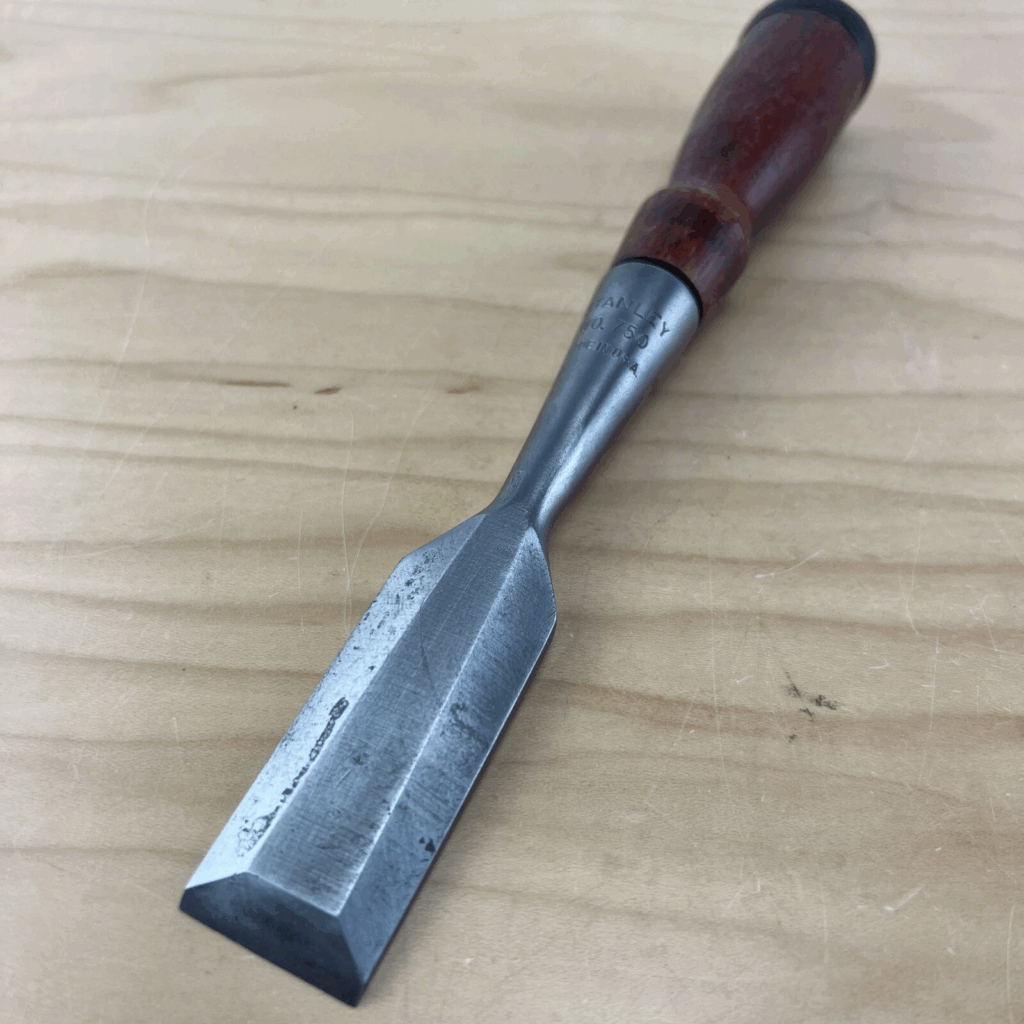
Introduced around the 1920s, these chisels were made with high-carbon steel and turned boxwood handles. They were designed for detailed joinery and trimming tasks. Craftsmen prized them for their sharpness and easy control. Complete sets are now difficult to find in good condition. A full set with original box can reach $400 to $800.
Each chisel was hand-ground and stamped with the Stanley logo. Collectors appreciate their fine balance and simple beauty. The handles often darkened with age, adding to their visual appeal. Many modern woodworkers still use vintage Stanley 750s for precision work. Original examples in untouched condition are especially sought after.
Keen Kutter Block Plane

Produced in the late 1890s, the Keen Kutter Block Plane was built from cast iron and fitted with a steel blade. It was used for trimming wood ends and smoothing surfaces. Known for its simplicity and durability, it became a staple in small workshops. Over time, many were replaced by newer designs, making surviving examples collectible. Prices now range from $100 to $250.
Collectors favor the ones bearing the early E.C. Simmons logo. The design was sturdy and well-balanced for one-handed use. Some rare models came with brass adjustments and nickel plating. These small planes represent the quality of everyday tools made to last. Their enduring appeal lies in both utility and heritage.
Stanley No. 98 and 99 Side Rabbet Planes
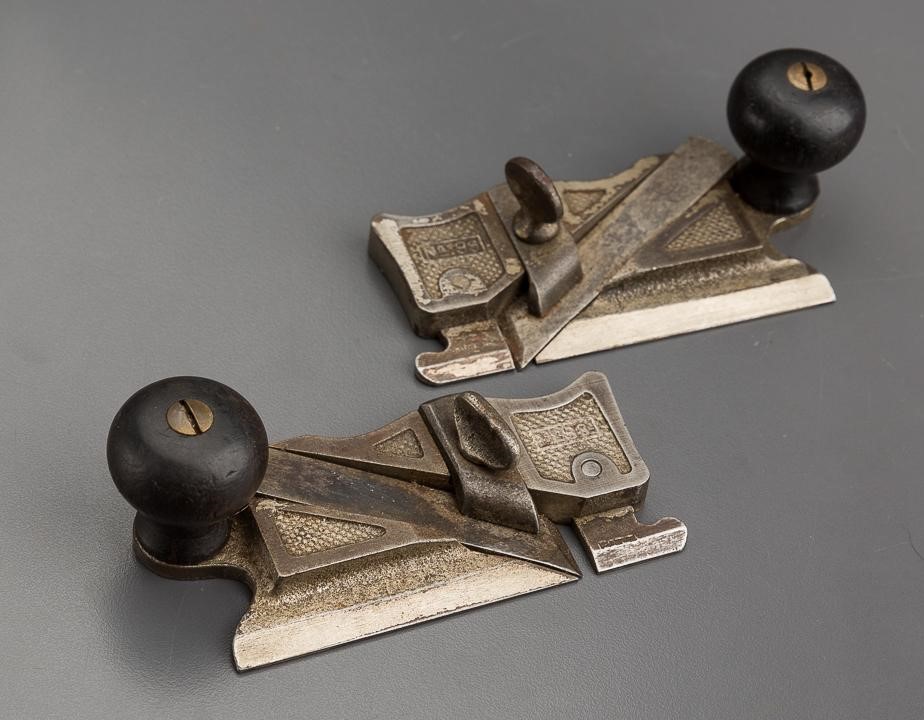
These twin planes were first made in 1896 and built from nickel-plated steel. They were used together to fine-tune grooves and joints in tight woodworking spaces. Their mirrored design made them practical and precise for finishing detailed work. They were sold in pairs, which adds to their collector appeal today. The pair typically sells for $300 to $600.
Collectors love their symmetrical shape and clean engineering. Many still come with the original wooden box or label. Their compact form makes them ideal display pieces for antique tool enthusiasts. Surviving pairs in original condition are becoming rare each year. These planes remind collectors of the craftsmanship that shaped classic woodworking.
Old woodworking tools remain symbols of patience, creativity, and quality work. Collectors treasure them for their beauty, rarity, and the skill they represent. Whether displayed or restored for use, each tool connects the past with the present.
This article originally appeared on Avocadu.
